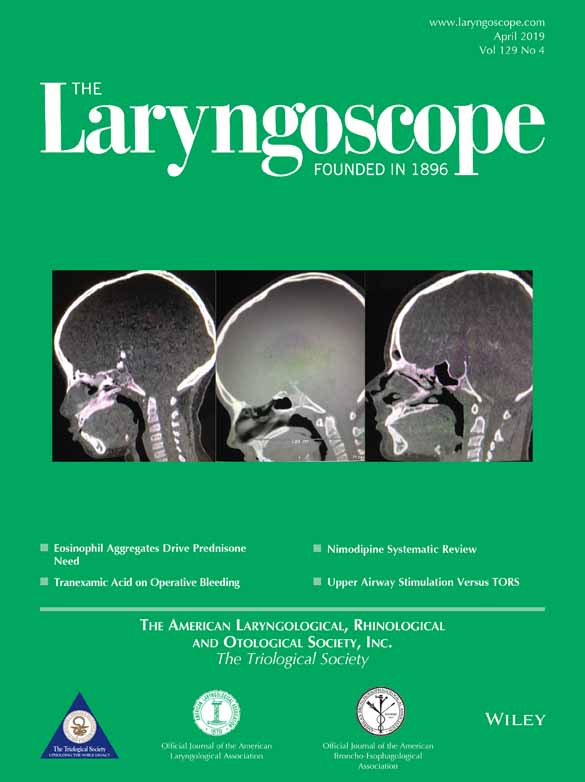Development of a survival animal model for subglottic stenosis
Institution where work was performed: Division of Pediatric Otolaryngology, Cincinatti Children's Hospital Medical Center, Cincinnati, Ohio, U.S.A.
Presented at the May 19, 2017 Annual Meeting of the American Society of Pediatric Otolaryngology (ASPO) in Austin, Texas, U.S.A.
This study was supported by donations from Celestial Ball Fundraiser. The authors have no other funding, financial relationships, or conflicts of interest to disclose.
Abstract
Objective
To develop a reproducible survival animal model for subglottic stenosis.
Study Design
Prospective study.
Methods
We evaluated five methods of inducing airway injury in 30 New Zealand white rabbits to produce a subglottic stenosis model. Experimental groups comprised: group 1 (n = 5), which underwent 4-hour intubation; group 2 (n = 5), which underwent induced subglottic injury with a nylon brush; group 3 (n = 10), which underwent subglottic injury with a nylon brush, followed by 4-hour intubation; group 4 (n = 5), which underwent subglottic injury with Bugbee cautery in 50% of the subglottic circumference, followed by 4-hour intubation; and group 5 (n = 5), which underwent subglottic injury with Bugbee cautery in 75% of the subglottic circumference, followed by 4-hour intubation. Five animals were used as controls. Endoscopy of the airway and sacrifice of animals were planned at an interval of 14 days postinjury. Histologic measurements were analyzed.
Results
No animals in groups 1 or 2 developed stenosis. In group 3, 50% of animals developed symptomatic grade 3 subglottic and tracheal stenosis, necessitating early endoscopy and sacrifice in three animals. Four animals in group 4 developed grade 1 subglottic stenosis, and four in group 5 developed grade 2 subglottic stenosis. Histologic measurements of lumen areas within each of these two groups were similar; all animals survived the follow-up period.
Conclusion
We successfully developed a reproducible survival model for induced subglottic stenosis using a combination of cautery-induced subglottic injury followed by 4-hour intubation. This model lays the foundation for future studies that evaluate endoscopic interventions for the management of subglottic stenosis.
Level of Evidence
NA Laryngoscope, 129:989–994, 2019




